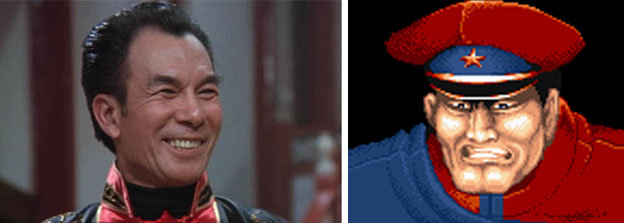
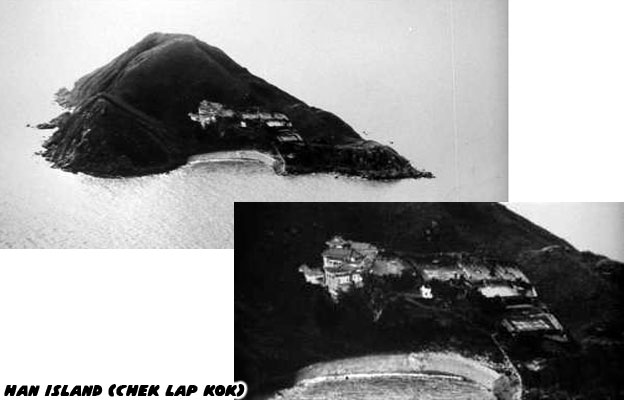
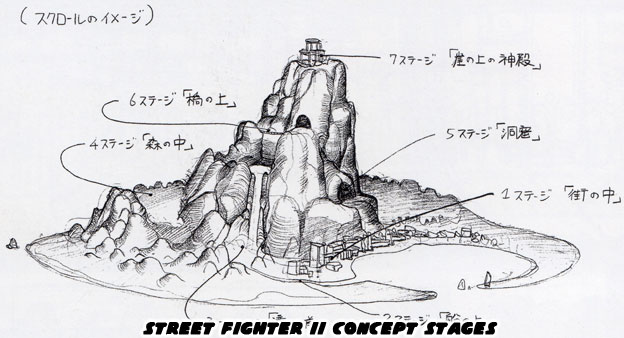
It wasn't obvious during the early days that Capcom was working on something historic. They were nonetheless writing the book on stage design. The artists actually went through the same learning curve that animators and filmmakers had during the early days of motion pictures. The designers had to create single screen stages that told a story. The way that each stage was framed was important. The lighting, color pallet, details and atmosphere put into the backgrounds would be almost as important as the fight at the forefront. The Capcom employees had to relearn level design, even after the work on the original Street Fighter and Final Fight. The engine for SFII would be able to put more colors on the screen than ever before. It would be able to support larger sprites, more frames of animation than any other game they had worked on. As a result the designers had to spend a little more time in the planning of each and every stage and character.
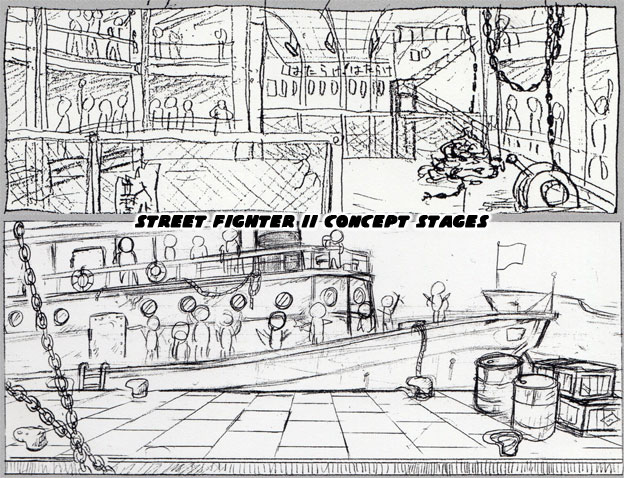
Since the first plans for SFII were to set the entire game on an island the designers wanted to bring each and every fighter through the port first. Bruce Lee had arrived to Han's Island on boat after all. A battle on a pier and a battle in a factory were some of the first stages laid out. The characters selected for the levels had to reflect the location. Zangief the Russian for example was originally a large and burly sailor named Vodka Gobalsky. He could have worked equally well in the port or factory. Instead the designers refined the character until he became the wrestler that most players were familiar with. In the game he was surrounded by steel frames and chain link fences. He was as tough and unyielding as the concrete floor on which he would drop opponents. By comparison the rich playboy Ken Masters would make the pier his home. His luxury yacht was docked off shore. This detail said a lot about the character and both the pier and his yacht would be revisited in sequels. The same happened to Zangief and the factory in which he battled in. The stages were beginning to develop a distinct personality.

The designers then began mapping out the other areas on Shadowlaw island. The city was next stop for the fighters. There was a busy intersection that the characters would battle on. Residents and visitors to the island would make up an impromptu audience. This stage would give the artists a chance to create multiple layers of animated sprites and show off the processing power for the CPS-II hardware. The electronic billboards and neon signs in the background would be more eye candy than gamers had seen before.
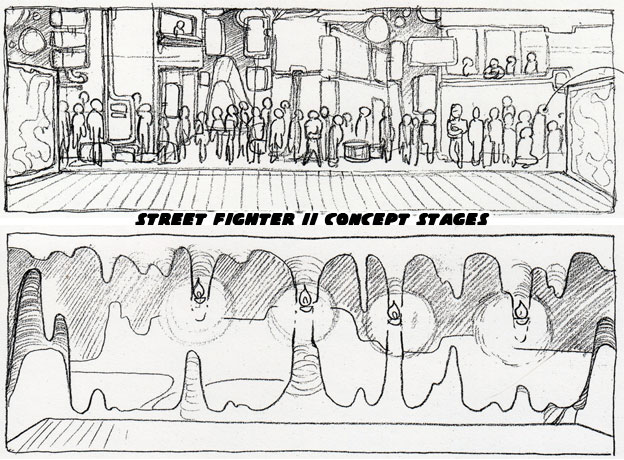
The other location, a secretive cave illuminated by lanterns would not make the cut. The cave was interesting in concept but it was lacking something unique. The designers did not want to spend too much time trying to figure out what was missing. They saw that the modern levels, the dock, city and factory had set precedence for the types of stages that the characters would be fighting in. They wanted to keep the game grounded in the modern world so they cut out the cave early on. It was not to say that the cave would not make for a good stage in a future game (and it would return) but that this game could not find a use for it. The designers at Capcom allowed themselves to make mistakes. They created more art and locations than they would ever need so that it would be easier to edit the levels down. These concept pieces could always be revisited in the future.
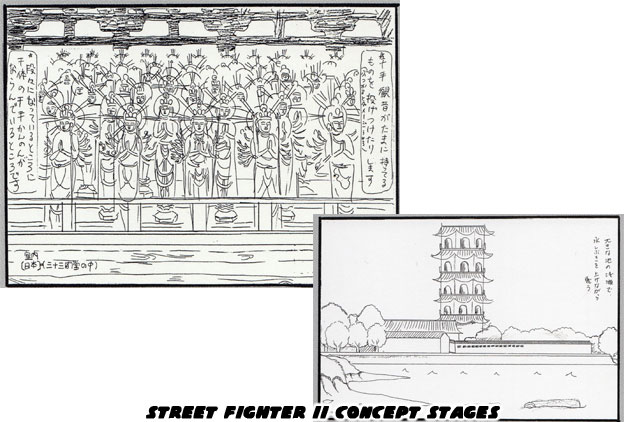
Shadowlaw Island was dropped for the final build. The developers decided to return to the globetrotting adventure from the original Street Fighter. The locations for each encounter were now scattered all around the world. Each of the locations still reflected their respective fighters. The sites also worked within the context of the universe. In particular they were all supposed to have modern cues. Details that might have put the levels out of the era would be refined or cut out until they made sense to the gamer. The levels featured in SFII were memorable and not far removed from the original concept art. The graphics for the levels may be considered quaint today but at one time they were cutting edge. They helped ground players in the world that Capcom had developed.
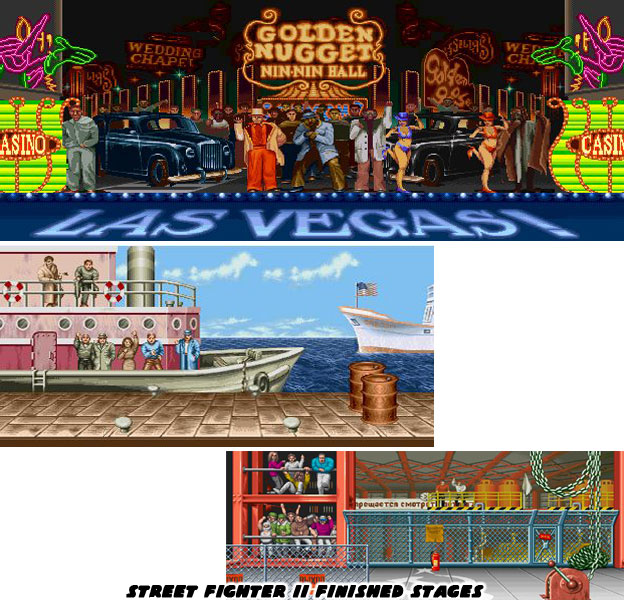
These stages were very much like backdrops in a movie. Even average martial arts fights were more memorable when they were set in a unique location. Street Fighter and most fighting games differed from motion pictures in that any playable character was the star. Bruce Lee may have shared screen time with John Saxon and Jim Kelly but the match-ups were always the same. Audiences would never see a fight between Kelly and Lee for example. Cinema like literature was limited in that regard. Fighting game players got a chance to pit heroes against heroes and villains agains villains. That tradition started very much with Street Fighter II. The best fighting games created a narrative around the cast and allowed players to explore all of the possibilities. The Bruce Lee films always featured unique locations and it was the island fortress featured in Enter the Dragon that set the standard that Capcom and Midway would try to match. It was much more interesting that the main villain had enough wealth and power to draw in fighters from around the world.


Up until that point game bosses were just like other martial artists and the ending could actually be anticlimactic. Additionally having one central opponent that had powers and abilities different than the traditional martial arts masters made fighting games in the East and West more unique. The multiple exotic locations that framed each battle helped gamers suspend their disbelief and get drawn into the world of Street Fighter. The best martial arts features were filmed on-location many decades before Street Fighter was created. Several of the Bruce Lee films were shot in unique areas to help bring viewers into his world. Street Fighter II would not have been as memorable without the extra artists working on level and character designs. The influences that these artists pulled from martial arts cinema as well as comics and animation could never be understated. Enter the Dragon did more than influence the development of Street Fighter II and Mortal Kombat. The themes featured in the movie would be carried over by the Street Fighter creators long after they had left Capcom. In fact several of the team members returned to the original concept of Street Fighter II and fleshed out one of the most thematic fighting games ever produced. The next blog will look at this game more closely. If you would like to sponsor me please visit my Patreon page and consider donating each month, even as little as $1 would help make better blogs and even podcasts!

No comments:
Post a Comment